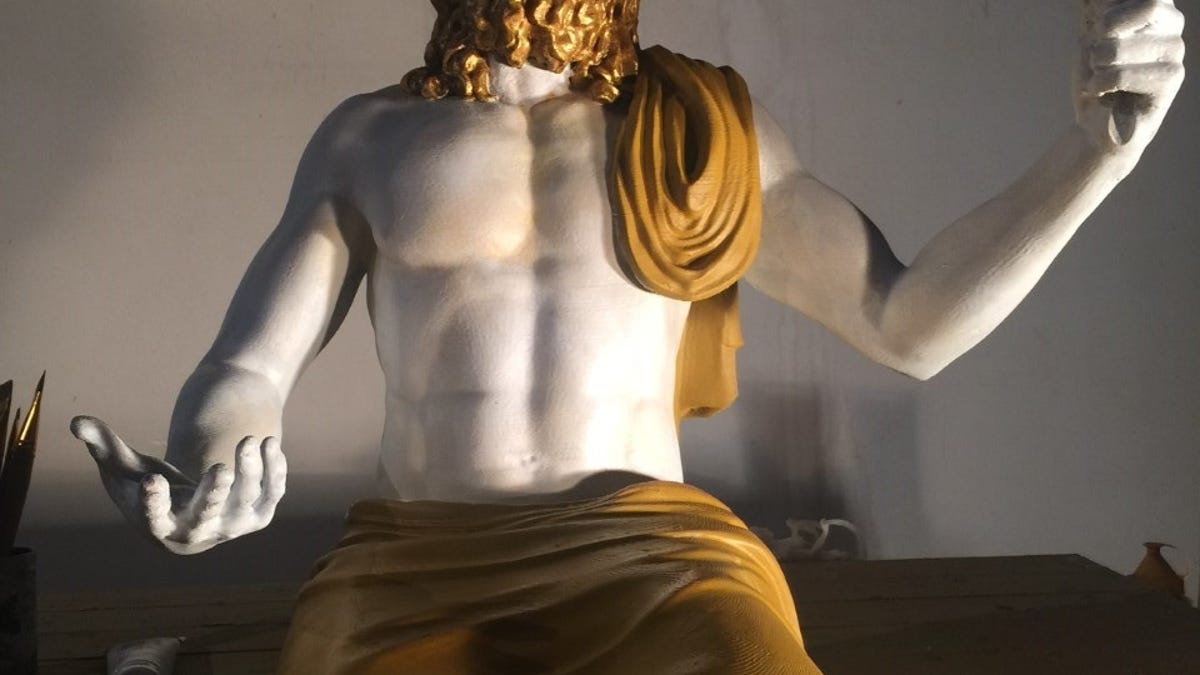Statue destroyed 1,500 years ago revived through 3D printing
The Statue of Zeus at Olympia was destroyed in the fifth century AD. Now thanks to 3D printing, it lives again.
3D printing has been used to build replicas of historical artefacts based on photographs and scans. Now, in honour of the 2016 Olympic Games, a team from 3D printing company Stratasys, 3DPTree in Atlanta and the Millennium Gate Museum in Atlanta have gone one step further -- recreating a statue that was destroyed over 1,500 years ago.
The Statue of Zeus at Olympia stood around 13 metres (43 feet) tall, towering over visitors to the Temple of Zeus in Olympia, Greece. It was constructed around 435 BC by the sculptor Phidias, and it would have made an imposing sight. Its core was wood, covered with ivory and gold, and it sat on a cedar wood throne decorated with ebony, ivory, gold and gems.
Now considered one of the Seven Wonders of the Ancient World, the statue stood (or sat) for over 850 years. In 420 AD, it was seized and taken to Constantinople, where it was added to the collection of imperial chamberlain Lausus. This was to be its final resting place. In 475, the Palace of Lausus and much of Constantinople was destroyed by fire, including the statue of Zeus.
No replica survived, only depictions on coins, and descriptions by historians and travellers. It was from these, and later statues that copied the style of the famous Zeus, that artists attempted to recreate the statue.
"The biggest challenge was the statue no longer existed. 3DPTree and museum curators teamed to conduct extensive research on how it would have looked, and later recreated it digitally," museum director Jeremy Kobus said in an email.
The resulting statue is printed in thermoplastics, rather than gold and ivory, and stands a fair bit smaller than the original at 1.8 metres (6 feet). It was constructed in pieces using the Stratasys Fortus 900mc 3D printer.
"The process used was FDM -- or fused deposition modeling. Materials were deposited in a very precise manner and at a specific speed -- then cooled at target temperatures," said Stratasys's Jesse Roitenberg. "These controlled elements lead to very high quality 3D printed parts. With finishing techniques, the final product looks very close to the original."
Size aside, the final product probably doesn't look as grand as the original, but it should help provide a sense of the scale and grandeur of the temple to museum visitors attending the "The Games: Ancient Olympia to Atlanta to Rio" exhibition from 20 August.
The techniques employed by the team can be used to help recreate other invaluable lost artefacts.
"Throughout history, there are always instances where the most precious works of art get destroyed or broken. In the past, this disappearance meant items were lost forever," Kobus said. "That's why we're so heavily invested in the artistic value of 3D printing."


